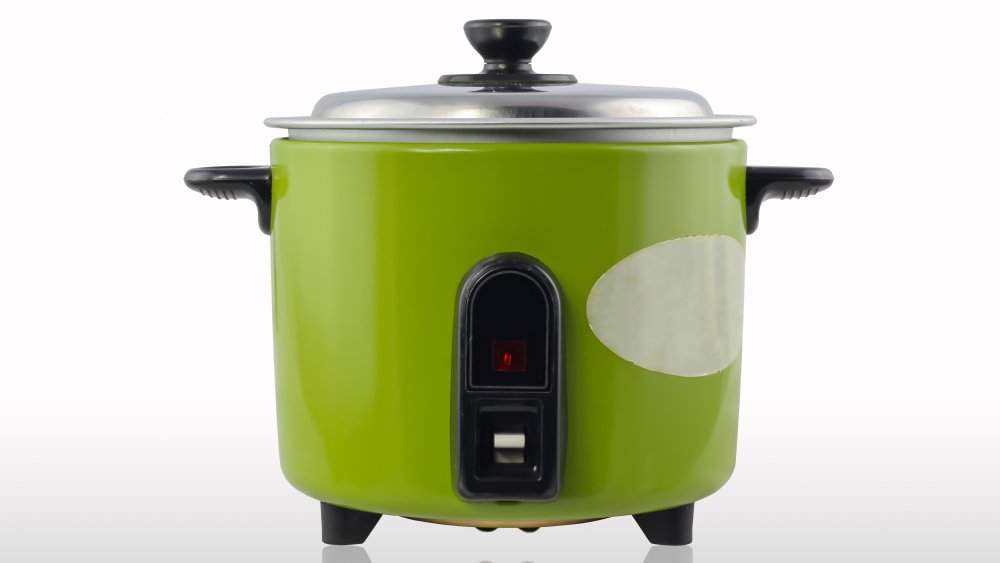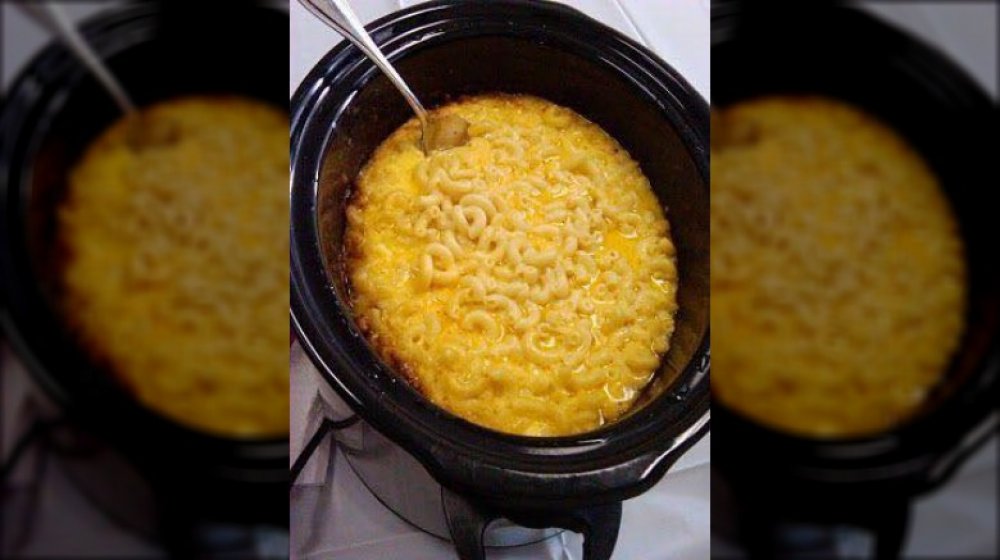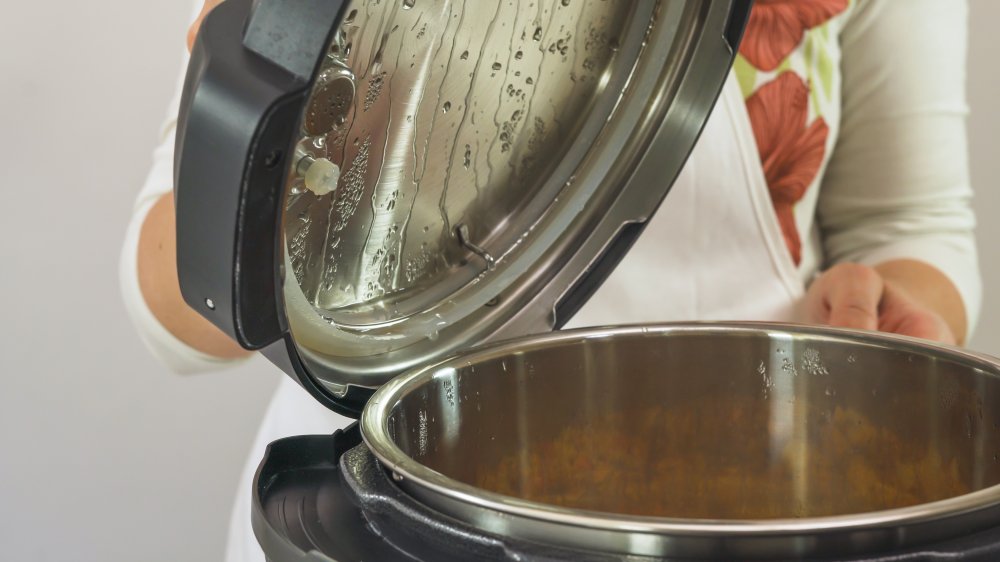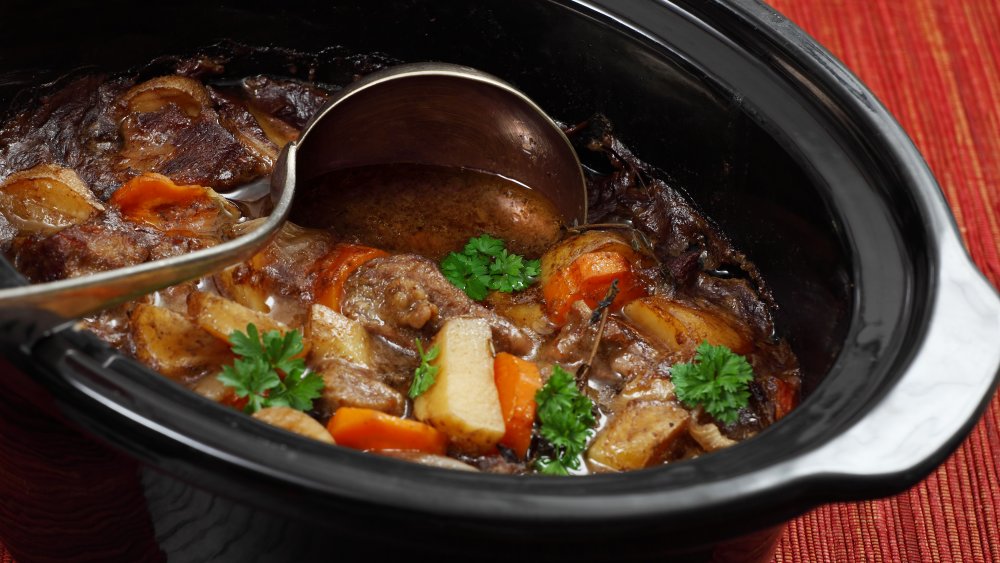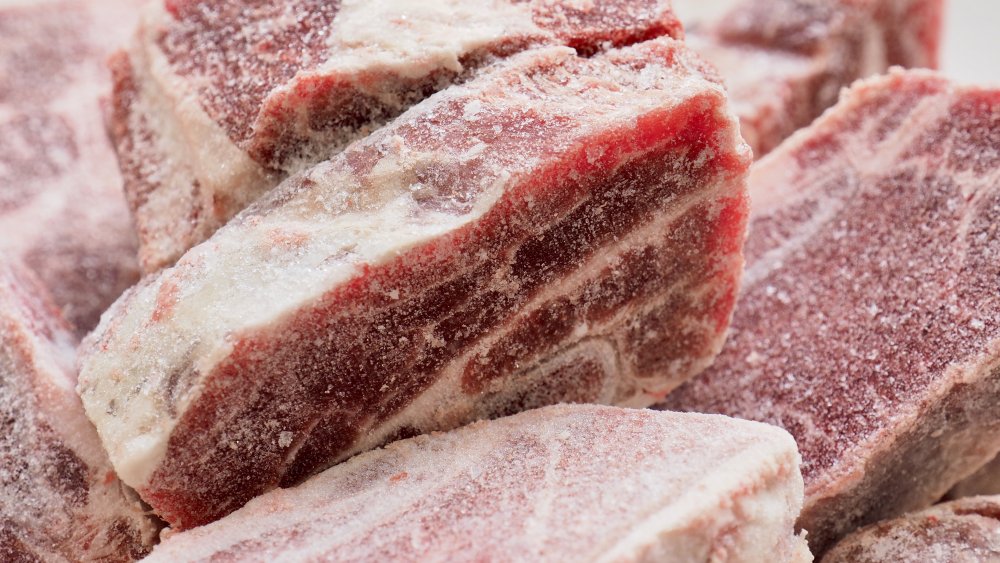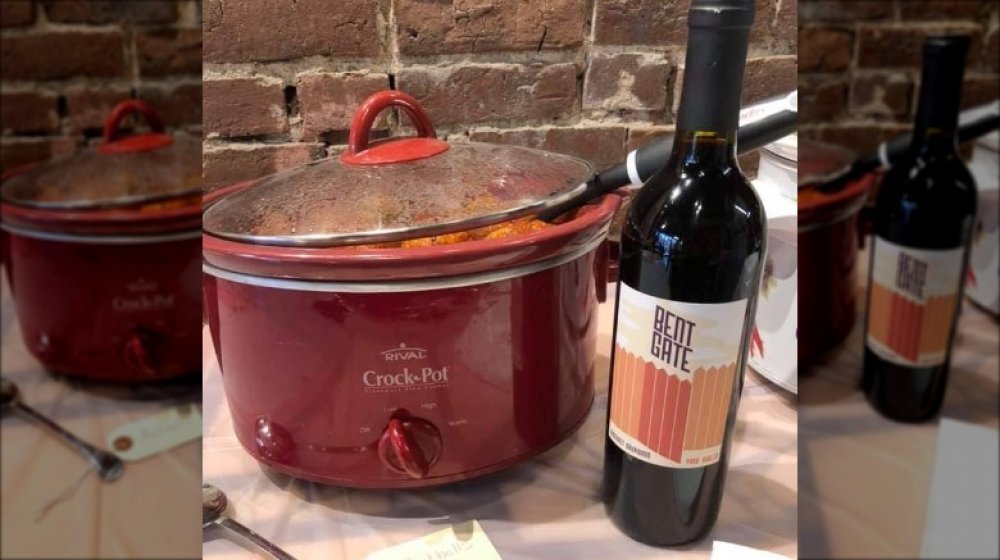Slow Cooker Mistakes You Don't Even Realize You're Making
The appeal of slow cookers, whether they be the latest, greatest instant pots or vintage crock pots, lies in the fact that they make cooking dinner (or breakfast, or dessert, or even bread or homemade wine) so easy. Just set it and forget it, and it's not going to turn into a charred, smoking mess, which would be the case if you'd tried the same trick while cooking in the oven or on the stove top. Genius, right?
While it's true that slow cookers can make mealtimes a breeze, they're not totally foolproof — and there are some common missteps many of us make when using them. To ensure you're getting the most from your appliance, you may need to make some tweaks to your slow-cooking routine. Once you do, your slow-cooker creations are sure to be tastier than ever!
You're preparing the wrong things in your slow cooker
There are certain foods that just don't lend themselves well to slow cookery. Anything involving dairy items, such as cheese or milk, is a no-no. Dairy products will curdle if heated too long, and Bon Appetit recommends they be added at the very last moment. Another suggestion from the food magazine is to avoid slow-cooking pasta, since this is another food that wasn't designed to be cooked too far past al dente lest it turn to complete mush.
Also, avoid slow cooking seafood, since who wants a house infused with l'air de fish market? Gross. Not to mention, most types of seafood are better served by quick cooking and would tend to dry out in a slow cooker.
You're opening the lid too often
When cooking on the stove top in a saucepan or Dutch oven, who can't resist sneaking a peak under the lid from time to time? In fact, such lid-lifting is actually quite necessary, since you'll probably need to stir your dish occasionally to make sure it isn't sticking to the pan. When it comes to using a slow cooker, though, it's imperative that you resist the temptation to open up the lid. As The Kitchn explains: Slow cookers work by trapping the heat inside, so the food cooks low and slow. Each time you open the pot, more of the heat leaks out, and it takes a long time to get back to the proper level.
The Gardening Cook does note that there is one exception to the rule of not opening the lid: It's when you add something like dairy or fresh herbs that only need to be cooked for the final few minutes. Even then, you should try to keep the cooker open for as short a period of time as possible, and maybe even tack on a few extra minutes cooking time to compensate for any heat loss.
You're not filling your slow cooker the right amount
Reader's Digest notes that slow-cooked foods, particularly meats, need their space. They advise that you only fill up the slow-cooker about two-thirds of the way. The Kitchn suggests no more than three-quarters, although they also warn against under-filling the pot. Basically, anything in the two-thirds to three-quarters-full range seems to be the sweet spot, where there's enough room for the heat to circulate while also maintaining a steady temperature.
Good Housekeeping also adds a reminder to make sure that all of the meat you're cooking is fully submerged in the liquid. If there are any bits sticking out of the liquid, these will take longer to cook than the rest of the dish.
You're not prepping your meat
One very important safety tip, courtesy of The Kitchn, is to never to put frozen meat in the slow cooker. While using an instant pot at its higher temperature setting might work to cook frozen meat, traditional slow cookers stay in the low temp "danger zone" (40 to 140 degrees) too long to be safe for un-thawed meat. This can lead to harmful bacteria forming, which may cause food poisoning.
Once your meat is properly thawed, though, you still might not want to toss it directly in the slow cooker. Bon Appetit suggests that searing your meat on the stovetop first will give it added flavor and color. But they note that chicken is the one meat that doesn't benefit from browning first. For poultry, you just want to remove all chicken skin before cooking. Do leave the bones in, though, since they help the meat stay tender.
You're adding too much alcohol
Too much booze is seldom a good thing — everyone knows the horrors it can wreak on our bodies. At least if you overdo it on the alcohol in a recipe, your slow cooker isn't going to get tipsy and start drunk-texting the blender, but it still might ruin your recipe. The reason behind this is, most recipes that call for booze are assuming that you'll be cooking it at a heat high enough that the alcohol itself will evaporate, leaving only the flavor behind. Alcohol cooked in a slow cooker never gets hot enough to evaporate. If you want to avoid the taste of raw alcohol in your boeuf Bourguignon, The Kitchn suggests using the booze to deglaze the pan after you've browned the beef, and then adding the preheated wine to the cooker.
